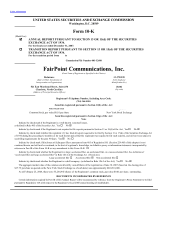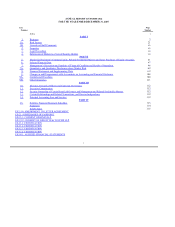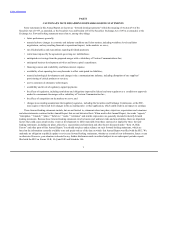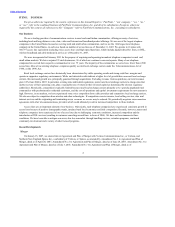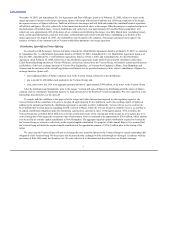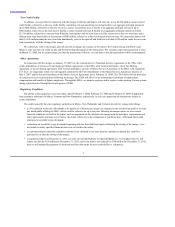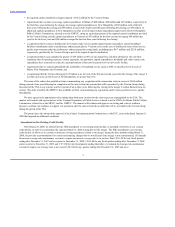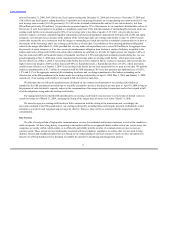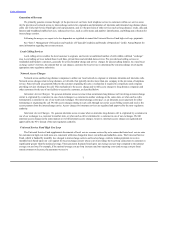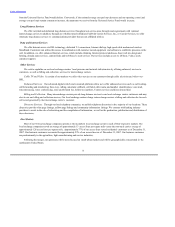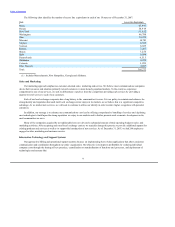FairPoint Communications 2007 Annual Report Download - page 9
Download and view the complete annual report
Please find page 9 of the 2007 FairPoint Communications annual report below. You can navigate through the pages in the report by either clicking on the pages listed below, or by using the keyword search tool below to find specific information within the annual report.
Table of Contents
We primarily generate revenue through: (i) the provision of our basic local telephone service to customers within our service areas;
(ii) the provision of network access to interexchange carriers for origination and termination of interstate and intrastate long distance phone
calls; (iii) Universal Service Fund high cost loop payments; and (iv) the provision of other services such as long distance resale, data and
Internet and broadband enabled services, enhanced services, such as caller name and number identification, and billing and collection for
interexchange carriers.
Following the merger, we expect to be less dependent on regulated revenues like Universal Service Fund high cost loop payments.
See “Item 7. Management’s Discussion and Analysis of Financial Condition and Results of Operations” in this Annual Report for
more information regarding our revenue sources.
Local calling service enables the local customer to originate and receive an unlimited number of calls within a defined “exchange”
area. Local calling services include basic local lines, private lines and switched data services. We provide local calling services to
residential and business customers, generally for a fixed monthly charge and service charges for special calling features. In a rural local
exchange carrier’s territory, the amount that we can charge a customer for local service is determined by rate proceedings involving the
appropriate state regulatory authorities.
Network access enables long distance companies to utilize our local network to originate or terminate intrastate and interstate calls.
Network access charges relate to long distance, or toll calls, that typically involve more than one company in the provision of telephone
service. Since toll calls are generally billed to the customer originating the call, a mechanism is required to compensate each company
providing services relating to the call. This mechanism is the access charge and we bill access charges to long distance companies and
other customers for the use of our facilities to access the customer, as described below.
We generate intrastate access revenue when an intrastate long distance call involving an interexchange
carrier is originated by a customer in one of our exchanges to a customer in another exchange in the same state, or when such a call is
terminated to a customer in one of our rural local exchanges. The interexchange carrier pays us an intrastate access payment for either
terminating or originating the call. We bill access charges relating to such calls through our carrier access billing system and receive the
access payment from the interexchange carrier. Access charges for intrastate services are regulated and approved by the state regulatory
authority.
We generate interstate access revenue when an interstate long distance call is originated by a customer in
one of our exchanges to a customer in another state, or when such a call is terminated to a customer in one of our exchanges. We bill
interstate access charges in the same manner as we bill intrastate access charges; however, interstate access charges are regulated and
approved by the FCC instead of the state regulatory authority.
The Universal Service Fund supplements the amount of local service revenue received by us to ensure that basic local service rates
for customers in high cost rural areas are consistent with rates charged in lower cost urban and suburban areas. The Universal Service
Fund, which is funded by monthly fees charged to interexchange carriers and local exchange carriers, makes payments to us on a
monthly basis based upon our cost support for local exchange carriers whose cost of providing the local loop connections to customers is
significantly greater than the national average. These payments fluctuate based upon our average cost per loop compared to the national
average cost per loop. For example, if the national average cost per loop increases and our operating costs (and average cost per loop)
remain constant or decrease, the payments we receive
7

